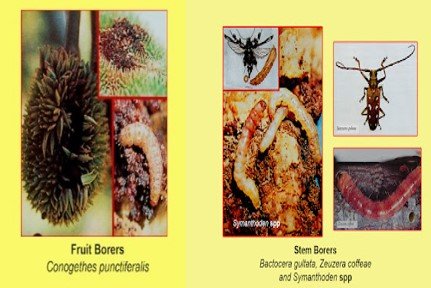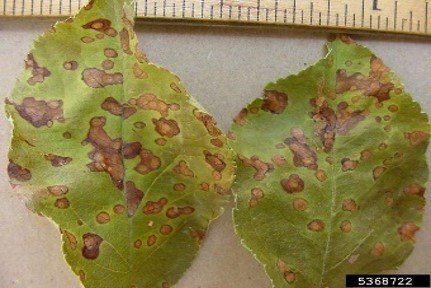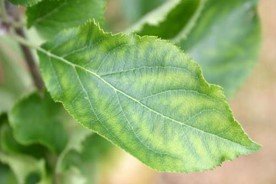Schedule
Durian Crop Schedule
| Product Name | Fertilizers | |||||
|---|---|---|---|---|---|---|
| Poornima kit | NPK Grow Caps |
Humigrow Nano Powder |
ALP | Sonha-Bihan | ||
| Humic Acid | Chelated Multi-micronutrient |
PGP/PGR | ||||
| Land Reparation | Month | |||||
| Soil Treatment | Month | |||||
| Vegetative Growth | Month 1 | 1 Kit | ||||
| Month 2 | ||||||
| Month 3 | 2 Caps | 120gm | ||||
| Month 4 | ||||||
| Month 5 | 1 Kit | |||||
| Month 6 | ||||||
| Month 7 | 2 Caps | 120gm | ||||
| Month 8 | ||||||
| Month 9 | 1 Kit | |||||
| Month 10 | ||||||
| Month 11 | 2 Caps | 120gm | ||||
| Month 12 | ||||||
| Flowering | 250gm | 250gm | ||||
| Fruiting | 500gm | 500gm | ||||
| Pruning | ||||||
| Total Quantity | 3 Kit | 6 Caps | 360gm | 750gm | 750gm | |
| Broadcast | |
| Top Dressing | |
| Basal Dressing | |
| Soil Application | |
| Spray | |
| * | Optional |
NOTE: For the first year donot immidietaly substitute 100% chemical fertilizer with the SIESTO GREEN products, as the soil is used to chemical fertilizer, it may affect the output. So the best way to substitute is by reducing 50% of chemical input in the first year, 25% the following 2nd year, & then another 10% by the 3rd year. After the 3rd year use synthetic fertilizer / inorganic fertilizer if their is a requirement depending on the soil health.
CROP SCHEDULE FOR CABBAGE
Sr. No.
Treatment / Application
Product
Dose /Acre
APPLICATION
Management
1
Vegetative – Dissolve in 20 to 200 ltr. of water as required for 1 acre of land and apply through Drip Irrigation or drench.
POORNIMA KIT
1 KIT
Apply it in Month 1, month 5, month 9
It is a balanced form of nutrients that includes NPK, Zinc, Cropforce NP, Humigrow NP, and Mycorrhiza NP
2
Vegetative – Mix all with the required amount of water and apply through drip irrigation, flood irrigation, or drenching as per farmer’s availability.
NPK + Humigrow
2 Caps + 120gm
Apply it in 3rd, 7th & 11th month.
It is a balanced form of Nutrition that includes NPK.
3
Flowering – Mix both in 200 liters of water as per requirement and spray it in the plants.
ALP + Sonhabihan
250gm + 250gm
Apply during the flowering period.
It is a Micronutrient and PGP that helps in Growth, Fruit set, and the quality of the produce.
4
Fruiting – Mix both in the required amount of water and apply it to the soil near the plant roots.
ALP + Sonhabihan
500gm + 500gm
Apply after fruit set.
It is a Micronutrient and PGP that helps in Growth, Fruit set, and the quality of the produce.
PEST ATTACKS, BACTERIAL, OR FUNGAL MANAGEMENT
PEST / BACTERIAL / FUNGAL
IDENTIFICATION IN CROP
SYMPTOMS
SUGGESTED PRODUCT
Fruit Borer
 The insect lays eggs on the durian fruit it infests.
Traps + Meta + BT
Fruit Rot
The insect lays eggs on the durian fruit it infests.
Traps + Meta + BT
Fruit Rot
 Symptoms are irregular necrotic patches in different shades of brown .
Indofa + Bacillus
Fire Blight
Symptoms are irregular necrotic patches in different shades of brown .
Indofa + Bacillus
Fire Blight
 The plant appears as if it has been scorched by fire; watery exudate may be present in infected areas.
Indofa + Bacillus + Bacillus Subtilis
Powdery Mildew
The plant appears as if it has been scorched by fire; watery exudate may be present in infected areas.
Indofa + Bacillus + Bacillus Subtilis
Powdery Mildew
 White velvety patches on the underside of leaves; chlorotic spots on the top side of the leaves
Lifeline + Indofa + BT + Bacillus
Black Rot
White velvety patches on the underside of leaves; chlorotic spots on the top side of the leaves
Lifeline + Indofa + BT + Bacillus
Black Rot
 Purple flecks or circular lesions which are brown in the center and purple at the margin; red flecks, purple lesions, and/or brown-black rings on fruit.
Indofa + Bacillus
Purple flecks or circular lesions which are brown in the center and purple at the margin; red flecks, purple lesions, and/or brown-black rings on fruit.
Indofa + Bacillus
 The insect lays eggs on the durian fruit it infests.
Traps + Meta + BT
Fruit Rot
The insect lays eggs on the durian fruit it infests.
Traps + Meta + BT
Fruit Rot
 Symptoms are irregular necrotic patches in different shades of brown .
Indofa + Bacillus
Fire Blight
Symptoms are irregular necrotic patches in different shades of brown .
Indofa + Bacillus
Fire Blight
 The plant appears as if it has been scorched by fire; watery exudate may be present in infected areas.
Indofa + Bacillus + Bacillus Subtilis
Powdery Mildew
The plant appears as if it has been scorched by fire; watery exudate may be present in infected areas.
Indofa + Bacillus + Bacillus Subtilis
Powdery Mildew
 White velvety patches on the underside of leaves; chlorotic spots on the top side of the leaves
Lifeline + Indofa + BT + Bacillus
Black Rot
White velvety patches on the underside of leaves; chlorotic spots on the top side of the leaves
Lifeline + Indofa + BT + Bacillus
Black Rot
 Purple flecks or circular lesions which are brown in the center and purple at the margin; red flecks, purple lesions, and/or brown-black rings on fruit.
Indofa + Bacillus
Purple flecks or circular lesions which are brown in the center and purple at the margin; red flecks, purple lesions, and/or brown-black rings on fruit.
Indofa + Bacillus
NUTRITION DEFICIENCY
NUTRIENT
IDENTIFICATION
SYMPTOMS
SUGGESTED PRODUCT
Potassium
 Old leaves are bluish green with scorched margins (brown or grey). Margins may first appear light green and later turn necrotic. Necrosis progresses from the margins inward to the midrib.
Potash Grow Caps
Sulphur
Old leaves are bluish green with scorched margins (brown or grey). Margins may first appear light green and later turn necrotic. Necrosis progresses from the margins inward to the midrib.
Potash Grow Caps
Sulphur
 Leaf growth is reduced and leaves are pale green/yellow in color. Chlorotic leaves eventually develop necrotic blotches near the margin. Symptoms start at younger leaves.
Sulphur Grow Caps
Iron
Leaf growth is reduced and leaves are pale green/yellow in color. Chlorotic leaves eventually develop necrotic blotches near the margin. Symptoms start at younger leaves.
Sulphur Grow Caps
Iron
 Symptoms always start at the youngest leaves with yellow-green, later lemon yellow, and pale yellow to whitish interveinal chlorosis. The main veins still remain green.
ALP
Manganese
Symptoms always start at the youngest leaves with yellow-green, later lemon yellow, and pale yellow to whitish interveinal chlorosis. The main veins still remain green.
ALP
Manganese
 Symptoms start at young, fully developed, and medium leaves. They show yellow-green or yellow interveinal chlorosis. Veins and adjacent tissue remain green.
ALP
Zinc
Symptoms start at young, fully developed, and medium leaves. They show yellow-green or yellow interveinal chlorosis. Veins and adjacent tissue remain green.
ALP
Zinc
 Typical symptoms of zinc deficiency are "little leaf" and "rosetting", caused by short internodes. Leaves are small, longish, and partly yellow in color. Often interveinal chlorosis is visible.
Zinc Grow Caps
Typical symptoms of zinc deficiency are "little leaf" and "rosetting", caused by short internodes. Leaves are small, longish, and partly yellow in color. Often interveinal chlorosis is visible.
Zinc Grow Caps
 Old leaves are bluish green with scorched margins (brown or grey). Margins may first appear light green and later turn necrotic. Necrosis progresses from the margins inward to the midrib.
Potash Grow Caps
Sulphur
Old leaves are bluish green with scorched margins (brown or grey). Margins may first appear light green and later turn necrotic. Necrosis progresses from the margins inward to the midrib.
Potash Grow Caps
Sulphur
 Leaf growth is reduced and leaves are pale green/yellow in color. Chlorotic leaves eventually develop necrotic blotches near the margin. Symptoms start at younger leaves.
Sulphur Grow Caps
Iron
Leaf growth is reduced and leaves are pale green/yellow in color. Chlorotic leaves eventually develop necrotic blotches near the margin. Symptoms start at younger leaves.
Sulphur Grow Caps
Iron
 Symptoms always start at the youngest leaves with yellow-green, later lemon yellow, and pale yellow to whitish interveinal chlorosis. The main veins still remain green.
ALP
Manganese
Symptoms always start at the youngest leaves with yellow-green, later lemon yellow, and pale yellow to whitish interveinal chlorosis. The main veins still remain green.
ALP
Manganese
 Symptoms start at young, fully developed, and medium leaves. They show yellow-green or yellow interveinal chlorosis. Veins and adjacent tissue remain green.
ALP
Zinc
Symptoms start at young, fully developed, and medium leaves. They show yellow-green or yellow interveinal chlorosis. Veins and adjacent tissue remain green.
ALP
Zinc
 Typical symptoms of zinc deficiency are "little leaf" and "rosetting", caused by short internodes. Leaves are small, longish, and partly yellow in color. Often interveinal chlorosis is visible.
Zinc Grow Caps
Typical symptoms of zinc deficiency are "little leaf" and "rosetting", caused by short internodes. Leaves are small, longish, and partly yellow in color. Often interveinal chlorosis is visible.
Zinc Grow Caps


